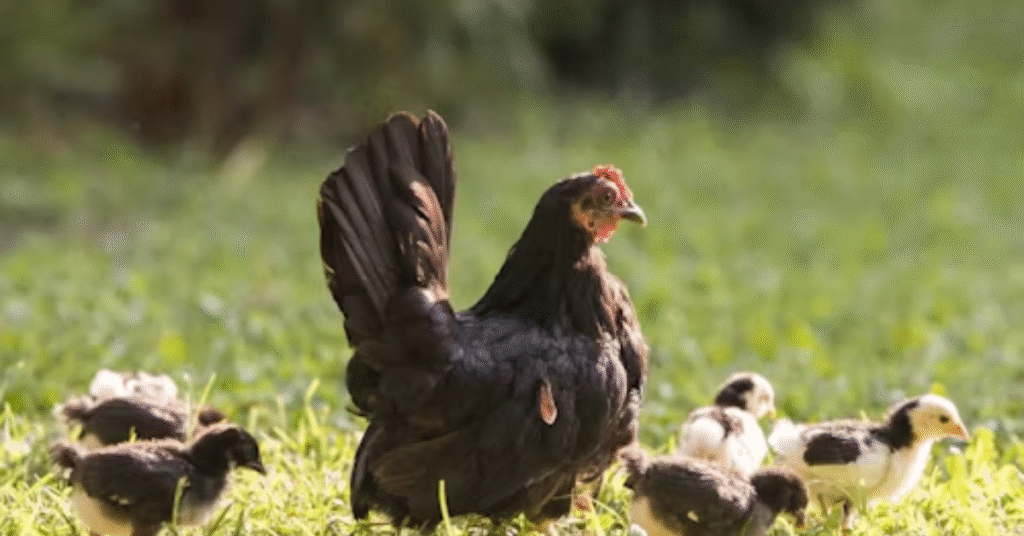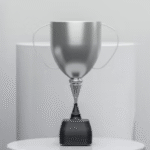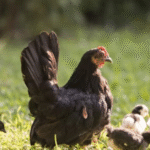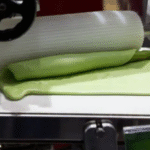For those new to the world of poultry farming or curious about how commercial chicken production begins, the term chick pull might seem unfamiliar. Yet, it marks one of the most essential stages in the hatchery process. A chick pull refers to the organized and time-sensitive activity of removing newly hatched chicks from incubators and transferring them to brooders or packaging facilities for distribution. It happens after 21 days of incubation, when the fertilized eggs hatch, and the chicks are strong enough to be processed. This step is not only crucial for animal welfare but also influences commercial productivity, hatchery scheduling, and farm economics. Understanding how chick pull works, its role in the poultry supply chain, and its broader implications reveals a detailed story of science, precision, and industry evolution.
The Basics of Chick Pull: Timing and Technique
At its core, a chick pull is a scheduled operation that requires coordination among hatchery workers, automation technologies, and biosecurity protocols. The process begins when eggs reach their hatching day—usually Day 21 of incubation for chickens. At this point, chicks start to pip (break the shell) and emerge. Over the next 24 to 36 hours, hatcheries monitor these chicks until most have successfully hatched and fluffed up (dried and fully feathered).
Once the optimal hatching window has passed, the chick pull begins. Workers or automated systems remove the hatching trays from incubators and begin sorting, counting, and transferring the chicks to designated containers. Dead or weak chicks are separated out, and strong, healthy ones are prepared for transport.
Key Steps in the Chick Pull Process
| Step | Description |
|---|---|
| Candling (Pre-hatch) | Inspecting eggs before hatching to ensure fertility and embryo development. |
| Monitoring Hatch Time | Watching for signs of external pipping and fluffing. |
| Tray Removal | Removing hatching trays from incubators after optimal hatching window. |
| Sorting and Grading | Separating healthy chicks from weak, dead, or unhatched eggs. |
| Counting and Packing | Manually or automatically counting chicks and placing them in transport boxes. |
| Post-Pull Cleaning | Sanitizing incubators and trays to prepare for next batch. |
Each of these steps is executed with precision to minimize stress on the chicks and maintain biosecurity standards.
Why Chick Pull Matters in Modern Poultry Farming
Chick pull is not just about moving chicks from point A to B. It directly affects:
- Chick Viability
Delays in pulling can lead to dehydration or overheating, especially in hatchers not well-ventilated. Pulling chicks at the right time ensures optimal health and lowers early mortality rates. - Farm Scheduling
Broiler farms and layer farms often coordinate delivery based on pull times. This ensures brooders are heated and ready before chick arrival, avoiding downtime. - Welfare Standards
Modern hatcheries now incorporate welfare metrics into chick pull protocols—ensuring chicks are not held too long post-hatch, minimizing rough handling, and using quieter conveyor systems. - Economic Outcomes
A well-executed chick pull contributes to higher first-week survival rates, better feed conversion ratios, and ultimately, improved profit margins.
Automation and Technology in Chick Pull Operations
Traditionally, chick pulling was done manually, involving dozens of workers who would remove trays, sort chicks, and clean up afterward. Today, hatcheries are increasingly adopting automation to enhance speed, accuracy, and hygiene.
Some technological innovations include:
- Infrared Beak Treatment Machines
Installed during chick pull to reduce future feather pecking in layers. - Automated Counting Systems
Using optical sensors or weight algorithms to count chicks during packing. - Conveyor-Based Transfer Units
That gently move chicks from trays to containers, reducing manual handling. - Digital Monitoring Systems
Providing real-time updates on hatch progress, pull timing, and environmental conditions.
These innovations help streamline the process while maintaining animal welfare and traceability.
Ethical and Welfare Considerations
In recent years, chick pull procedures have come under scrutiny from animal rights groups and welfare-focused consumers. Concerns often arise around:
- Male Chick Culling
In layer hatcheries, male chicks are not viable for egg-laying or efficient meat production and are often culled. Many hatcheries are now exploring in-ovo sexing technologies, which determine the chick’s sex before hatching to avoid ethical dilemmas. - Transport Conditions Post-Pull
Transport boxes must maintain adequate airflow, temperature control, and cushioning to ensure chicks arrive healthy and stress-free. - Noise and Light Exposure
Gentle lighting and quiet environments during the chick pull are shown to reduce stress and promote calmer behavior in the first few days.
Efforts to standardize ethical chick pull practices are gaining traction globally, with some countries introducing regulations and certifications.
Global Variations in Chick Pull Practices
Chick pull timing and practices vary depending on geographical location, climate, and the type of poultry operation. For example:
| Region | Typical Pull Timeframe | Unique Practices |
|---|---|---|
| North America | 20.5–21.5 days | High-tech automation, strict welfare compliance |
| Europe | 21–22 days | Early adoption of in-ovo sexing and hatchery hygiene |
| South Asia | 20.5–21 days | More manual handling, often influenced by labor costs |
| Middle East | 21–22 days | Emphasis on biosecurity due to high temps |
| Latin America | 20.5–21.5 days | High throughput hatcheries with community involvement |
This regional variability is driven not only by technology but also by climate, hatchery infrastructure, and workforce availability.
The First 24 Hours Post Pull
Once chicks are pulled and packed, the countdown begins. The first 24 hours are the most critical for chick health. They need:
- Immediate Access to Water and Feed
Although they can survive for up to 72 hours post-hatch without food (thanks to the yolk sac), early feeding improves growth rates significantly. - Temperature Regulation
Brooders must be pre-heated to 90–95°F for broilers, slightly lower for layers. - Lighting Programs
Soft lighting encourages exploration and early feeding behavior. - Vaccination and Prophylaxis
Many hatcheries administer vaccinations (like Marek’s disease or Newcastle) right after the pull, either via spray, eye drops, or subcutaneous injection.
These practices ensure that the transition from hatchery to farm is as smooth and stress-free as possible.
Labor and Human Capital in Chick Pull Operations
Despite growing automation, chick pulling remains a labor-intensive operation in many regions. Workers must be trained to:
- Handle chicks delicately without causing injury
- Identify unhealthy or abnormal chicks
- Maintain hygiene and wear protective gear
- Coordinate timing and packaging quickly during peak hours
In regions where chick pull is done manually, hatcheries often rely on local communities for seasonal labor. While this provides employment, it also raises questions about worker fatigue, occupational health, and efficiency.
Future Trends in Chick Pull and Hatchery Science
The next decade promises to transform chick pull operations through innovation and sustainability. Key areas of growth include:
- In-Hatchery Feeding Systems
These systems allow chicks to eat and drink immediately post-hatch, reducing the stress associated with waiting for transport. - Blockchain in Chick Tracking
Recording chick data (batch number, hatch time, genetics) in immutable ledgers could enhance traceability and food safety. - Vertical Hatcheries
Space-saving hatcheries in urban or vertical farms may require new chick pull workflows using robotics. - Welfare-Centric Certifications
Labels such as “Ethically Hatched” or “No Male Culling” may influence consumer buying behavior and pressure hatcheries to adapt. - AI-Powered Hatch Predictions
Artificial intelligence can now predict hatch rates based on incubation data, allowing hatchery managers to schedule chick pull more efficiently.
Environmental Impact and Sustainability
Chick pull might seem like a low-emission process, but when scaled to millions of chicks per week, the environmental footprint matters. Hatcheries are now exploring:
- Reusable Plastic Hatch Trays instead of single-use alternatives
- Solar Power Integration in hatchery infrastructure
- Biodegradable Packaging for transport containers
- Eco-optimizing Hatchery Water Use during sanitation and misting
These practices align with broader efforts to reduce carbon emissions and water usage in animal agriculture.
Educational and Research Opportunities
Veterinary schools and agricultural universities are increasingly offering modules on hatchery operations, including chick pull. Students learn:
- Embryology and chick development
- Hatchery management and economics
- Chick welfare assessment
- Biosecurity protocol implementation
Research is also expanding, including work on chick stress biomarkers, hatch window optimization, and automation’s effect on welfare.
Common Misconceptions About Chick Pull
Myth: Chicks are immediately separated from their mothers.
Truth: Commercial hatcheries incubate fertilized eggs in machines; there’s no maternal contact.
Myth: All chicks are pulled the same day they hatch.
Truth: Hatcheries often wait for a critical mass to hatch before pulling—usually over a 12–24-hour window.
Myth: Chick pull is dangerous for the birds.
Truth: When done correctly, chick pull is a safe, monitored, and low-stress process essential to poultry production.
Conclusion: The Quiet Yet Essential Step in Poultry Production
Chick pull may happen behind the scenes, but its effects ripple through the poultry supply chain—from hatchery to plate. It determines early chick health, drives farm productivity, influences ethical conversations, and represents the intersection of tradition and modern science.
For poultry enthusiasts, agricultural students, and ethical consumers alike, understanding the nuances of chick pull reveals a process more complex and essential than its name implies. As the industry evolves with technology and welfare reforms, chick pull stands at the frontier where life begins in modern poultry systems. Its future lies in balance: improving productivity while preserving the welfare and dignity of the smallest farm animals—one pull at a time.







